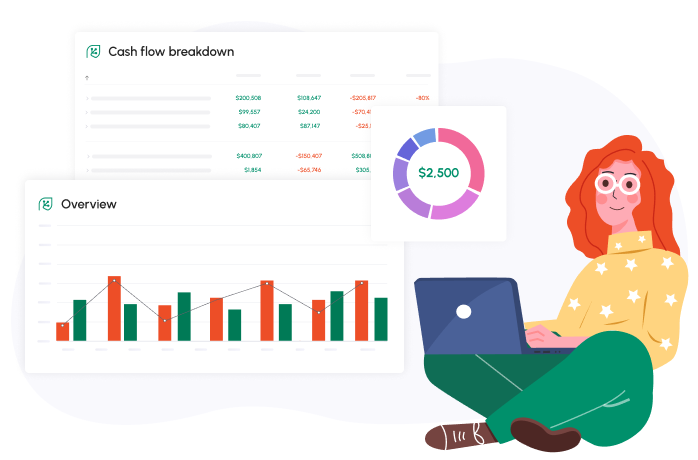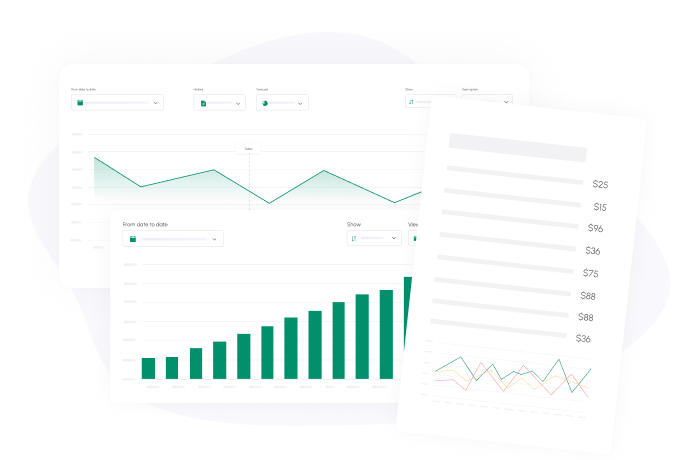

Operating cash flow is one of the most important financial metrics you can track in your business. If you don’t know how much liquidity you have, it will hamper your decision-making abilities.
What Is Operating Cash Flow (OCF)?
If you want to define operating cash flow, it’s: the measurement of cash a business generates from normal business activities. Many business owners should be running their OCF to help them understand their business profitability and learn where they can improve.
Why Is Operating Cash Flow Important?
Businesses need to be viable to be sustainable. If you have negative operating cash flow, it means that normal operations are not generating enough cash to continue.
What does this mean?
If OCF is in the negative, it does not have the liquidity to:
- Pursue growth opportunities
- Maintain current operations as-is
However, this doesn’t mean that the business cannot grow or become profitable. Many tech companies run in the negative and can sustain operations by securing outside financing, such as:
- Raising capital from investors
- Securing loans or lines of credit
If external financing cannot be secured, the business may have to close or find another way to generate revenue.
How To Calculate the Operating Cash Flow?
Calculating your OCF is possible using:
- Spreadsheets
- SaaS software
- Regular software
- Hiring accountants
However, calculating OCF is often done using spreadsheets by small business owners when they’re just starting their operations and want to keep costs down. Over time, it makes more sense to automate the process as much as you can.
Many companies are turning to SaaS solutions, like Cash Flow Frog, which connects to accounting platforms and helps:
- Reduce errors
- Account for all income
- Account for all expenses
If you run reports by hand, they can be accurate, but they’ll take a lot of time and resources to produce. Software and apps help reduce your costs over the long term and are less susceptible to human error.
The good news is that all of these methods will use the same OCF formula to help you come to the same OCF figure.
Operating Cash Flow Formula
If you want to find an easy formula for OCF, you’ll need the following data:
- Revenue
- Operating expenses
- Depreciation
- Taxes
- Changes in working capital
Based on this, you’ll then use a formula, such as (revenue – operating expenses) + depreciation – taxes – changes in working capital.
However, you may find other formulas that add these items into totals to make it easy to run calculations, such as total cash received – cash paid for operations. You can also use one of two methods when representing your operating cash flow.
Methods Of Representing Operating Cash Flow
If you want to depict your OCF, you can use one of two methods:
- Indirect: A method of OCF that begins with your net income and adds or subtracts variables to calculate cash from operations.
- Direct: A method of OCF that will track your transactions during a specific period of time and considers all of your cash inflows and outflows.
Cash Flow Frog uses the direct cash flow method when running forecasts and projections. However, it’s important for you to understand how both methods work.
Practical Examples of Calculating Operating Cash Flow
Based on the information above, let’s look at an example of OCF:
- Total revenue: $100,000
- Operating expenses: $75,000
- OCF: $100,000 - $75,000 = $25,000
In this example, the company has good operating cash flow, with $25,000 left over to grow its operations. As you can see, this is a company with OCF that will allow them to continue investing in their operations and growth.
However, it’s just one example of OCF.
Let's examine a few more scenarios to ensure that you understand how to properly run your own calculations.
- Net income: $100,000
- Non-cash expense: $20,000
- Account receivable: $15,000
- OCF: ($100,000+$20,000) - ($15,000) = $105,000
Naturally, you can go more in-depth with this by breaking down operating activities and changes in operating assets and liabilities. If you want to get complex with your calculations, it’s also possible to break OCF into years and look at what OCF was for each year in the past five years.
Using spreadsheets will make these calculations much easier than doing them all by hand.
A single spreadsheet will make it easy to perform all of your calculations and can be used as a template for future reports. However, you will need to go through all of your inflows and outflows to ensure that you’ve properly added in all income and expenses.
How To Analyze Operating Cash Flow
Analyzing OCF will require you to have a full understanding of your overall cash flow, including all of the cash coming into and going out of the business. In fact, you’ll want to do the following:
- Always aim for positive OCF because it will allow your company to continue its operations without needing to secure outside funding of any kind.
- Negative OCF must also be analyzed to determine why your OCF is low. For example, many businesses will find that they have positive investing cash flow and negative OCF. In this case, selling assets to keep the business operations may be a red flag that other integral changes must be made for the operations to remain viable over the long term.
- Negative investing OCF that is a result of investing may not be a bad thing. In this scenario, OCF is positive and investing cash flow is negative. When trying to grow your business and invest in the future, it’s not uncommon to have negative investing OCF.
- Free operating cash flow is also important to know when trying to secure investors.
Finally, you may want to consider calculating OCF margins. When you monitor margins, it’s a great way to measure efficiency and earnings quality. If you don’t know what OCF margins are, they’re created by dividing OCF by net revenue.
Unfortunately, OCF margins are different for every business. A 20% margin may be superb for one industry and very low for another.
It's crucial that you monitor your OCF margins over time to see if they grow or decline over time.
However, if you perform all calculations manually, it can be very difficult to analyze OCF properly. You can help make the process much easier by using automation and tools to run all of your cash flow reports for you.
Cash Flow Frog Is a Simple Yet Powerful Cash Flow Management
Instead of working with an operating cash flow template and crunching the number on your own, use a tool like Cash Flow Frog. We’ve developed our platform to make it fast and easy to track your cash flow.
It's a simple solution for businesses of all sizes that want to take control of their finances.
You can:
- Create current cash flow statements
- Run cash flow forecasts
- View custom insights
- Integrate with existing accounting tools
- Much more
If you’re struggling to learn how to get operating cash flow metrics or just want an easier way to monitor this important metric, give Cash Flow Frog a try. We allow you to connect to your existing accounting solutions so that we can use the data you already have available to help create accurate OCF statements.
Related posts:
You may be interested:
New:













